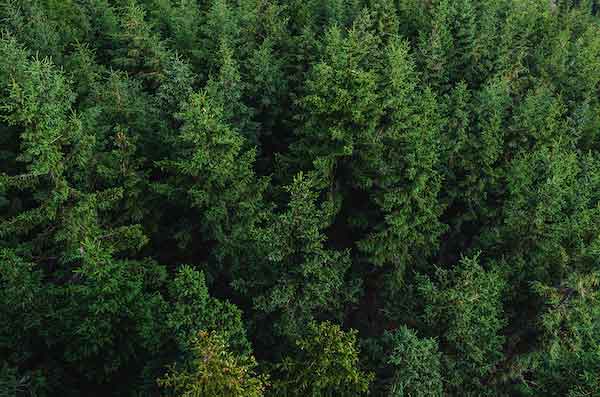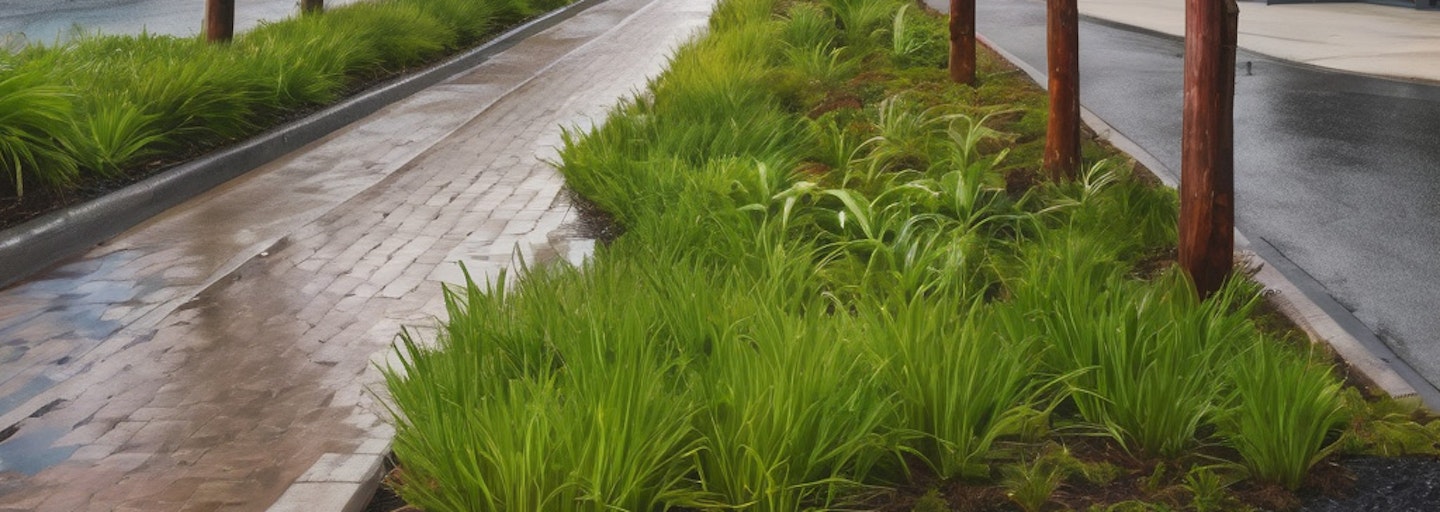How to create an effective stormwater management system with BioRetain
By integrating BioRetain into rain garden systems, we can naturally filter pollutants, mitigating the risk of flooding and contributing to an environmentally sustainable stormwater management system.
Efficient stormwater management
Azwood's BioRetain, a natural bio retention media used in rain gardens, is designed to store and treat stormwater from various sources, including subdivisions and estates.
During rain events, stormwater accumulates contaminants from different surfaces such as roads, parking lots, and industrial areas. These contaminants typically include:
Sediments
Heavy metals
Excess nutrients
Oil and Grease
Bacteria and Pathogens
Chemicals
To mitigate these impacts, it's crucial to implement stormwater management systems that incorporate plants and natural media like BioRetain. These systems can filter, absorb, and treat contaminants, improving water quality, protecting ecosystems, and reducing the risk of surface flooding.
The absence of plants and natural media to filter and treat stormwater runoff allows these contaminants to flow directly into water bodies, such as streams, rivers, and oceans. This can lead to water pollution, harm aquatic life, disrupt ecosystems, and pose risks to human health when these water bodies are used for recreational or drinking water purposes.
In conventional stormwater systems, heavy sediment gets captured in a sump. This older approach of open sumps for runoff control, while once common, is outdated. It permits lighter particles and floatables to flow directly through stormwater pipes and make their way into waterways, and eventually the sea, often carrying harmful substances with them. Unfortunately, some of these substances can be harmful and have adverse effects on our water ecosystems. This method not only poses environmental risks but also necessitates higher levels of road maintenance for landowners.
Download our free guide to learn more about Azwood's Bioretention media.
Creating a stormwater management system with BioRetain
Creating an effective stormwater management system with BioRetain involves several key steps to ensure that stormwater is effectively managed, treated, and stored.
Understand the technical aspects of a rain garden
Below we have outlined the steps of how to create a resourceful stormwater management system with BioRetain.
Site Assessment
Begin by conducting a comprehensive site assessment. This should include an analysis of the topography, soil types, and existing drainage infrastructure. Identify areas with potential stormwater runoff issues.
Regulatory Compliance
Familiarize yourself with local and regional stormwater regulations and compliance requirements. Ensure that your stormwater management system adheres to these regulations.
Catchment Area Calculation
Calculate the catchment area that contributes to stormwater runoff. This includes impervious surfaces like roofs, roads, and parking lots. Accurate calculations are crucial for determining the size and capacity of your stormwater management system.
Rain Garden Sizing
Determine the appropriate size and location for rain gardens. This will depend on the catchment area, local climate, and specific site conditions. These calculations will help us to determine how much BioRetain media you will need.
Media Selection
Choose the right BioRetain recipe for your location. Consider factors like climate, plant life, and hydraulic conductivity. The media should promote healthy plant growth, effective water filtration, and long-term performance. Azwood can help you create the best recipe for the project, customsied to your requirements.
Plant Selection
Select suitable plant species that thrive in your climate. These plants play a crucial role in the stormwater treatment process by absorbing water and filtering contaminants.
System Design
Work with engineers, surveyors, or planners to design the stormwater management system.
Testing and Monitoring
Implement testing and monitoring protocols to ensure the system's effectiveness. Regularly assess water quality, plant health, and system maintenance requirements.
Maintenance Plan
Develop a maintenance plan outlining routine tasks such as weeding, pruning, and sediment removal. Regular maintenance is essential for the long-term success of your stormwater management system as a build up of sediment can affect the infiltration rate of the natural rain garden media
Climate-specific design
For the BioRetain system to work optimally, it's crucial to match the media to the specific climate in which it's used. The media required to sustain plant life in Auckland differs significantly from what's needed in areas like Marlborough or Greymouth.
In Auckland's warmer climate with regular rainfall, the media should retain moisture (water holding capacity) but have a higher than average air filled porosity (AFP) to support healthy plant growth. In contrast, regions with higher rainfall, such as Marlborough, require media with different WHC and AFP properties to manage water flow adequately. Designing a resourceful stormwater system with BioRetain involves calculating the catchment area versus rain garden size, resulting in a tailored recipe for effective stormwater filtration and sustainable plant life maintenance.
Request a call to discuss you specific requirements.
To ensure the best results, engineers, surveyors, and planners collaborate to calculate catchment areas and rain garden sizes, guaranteeing the correct filter recipe and efficient stormwater management. Azwood can help design and test the correct recipe to filter the water naturally with BioRetain, offering a versatile and eco-friendly solution for effective stormwater treatment and long-term environmental protection.
While there might be a perception that rain gardens and bio retention systems occupy more space in estate developments, the reality is quite the opposite. These eco-friendly solutions contribute to higher-quality estates and create more pleasant environments. Moreover, they reduce roadside maintenance, offering a win-win scenario for the environment, councils and property owners.
In summary, understanding the impact of contaminants in water runoff highlights the need for more modern stormwater management solutions that not only protect our waterways but also enhance the quality of our community spaces.
Related articles

Follow us
More from Azwood
Connect with us on social media to learn more and be the first to hear our latest industry updates

